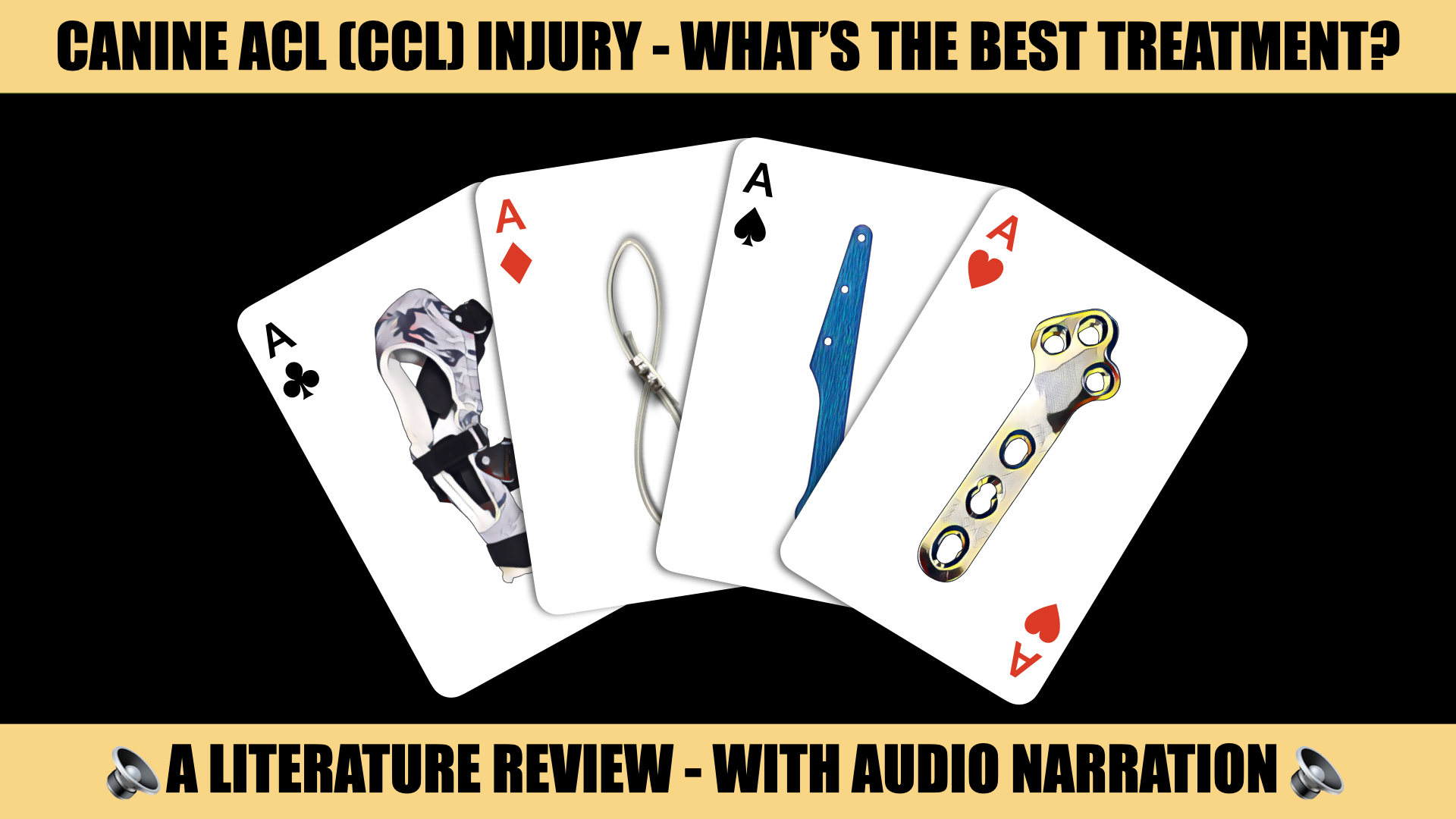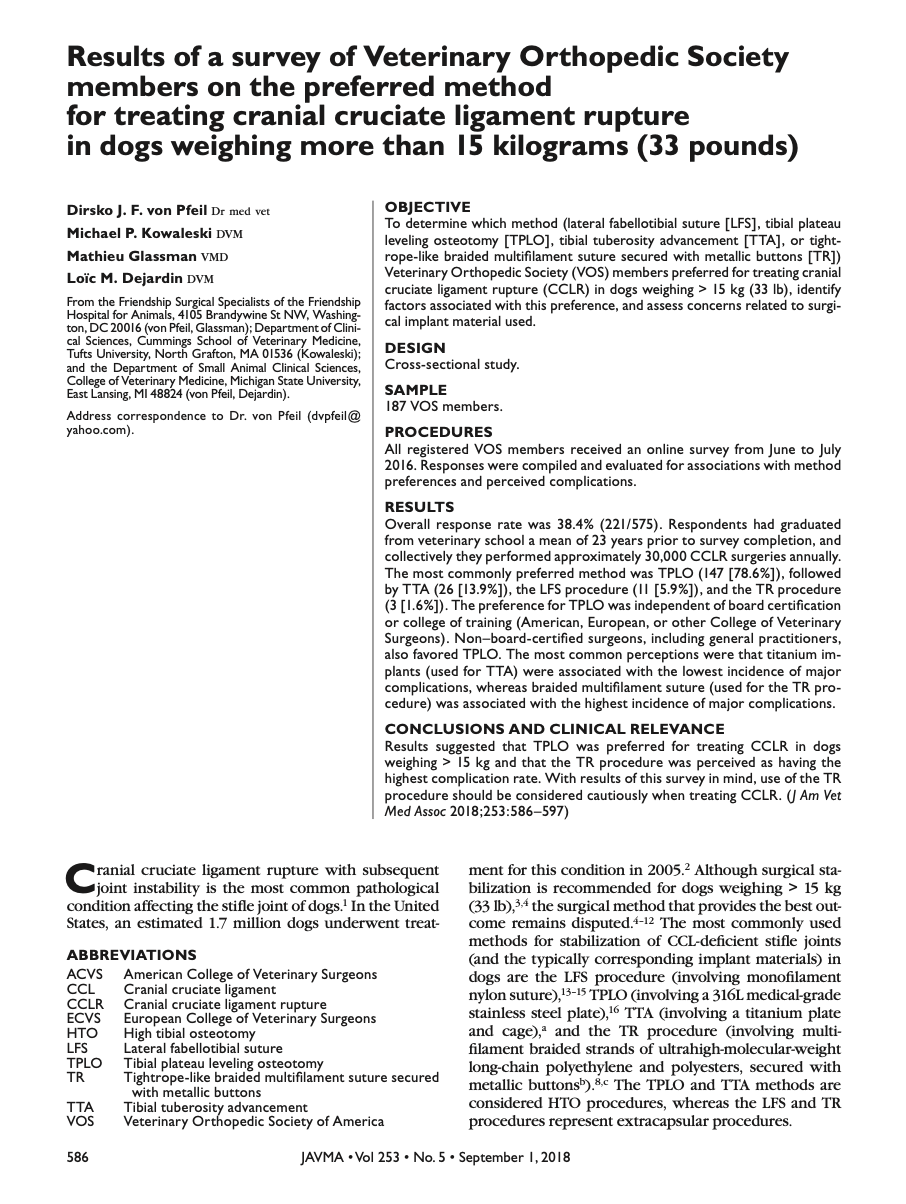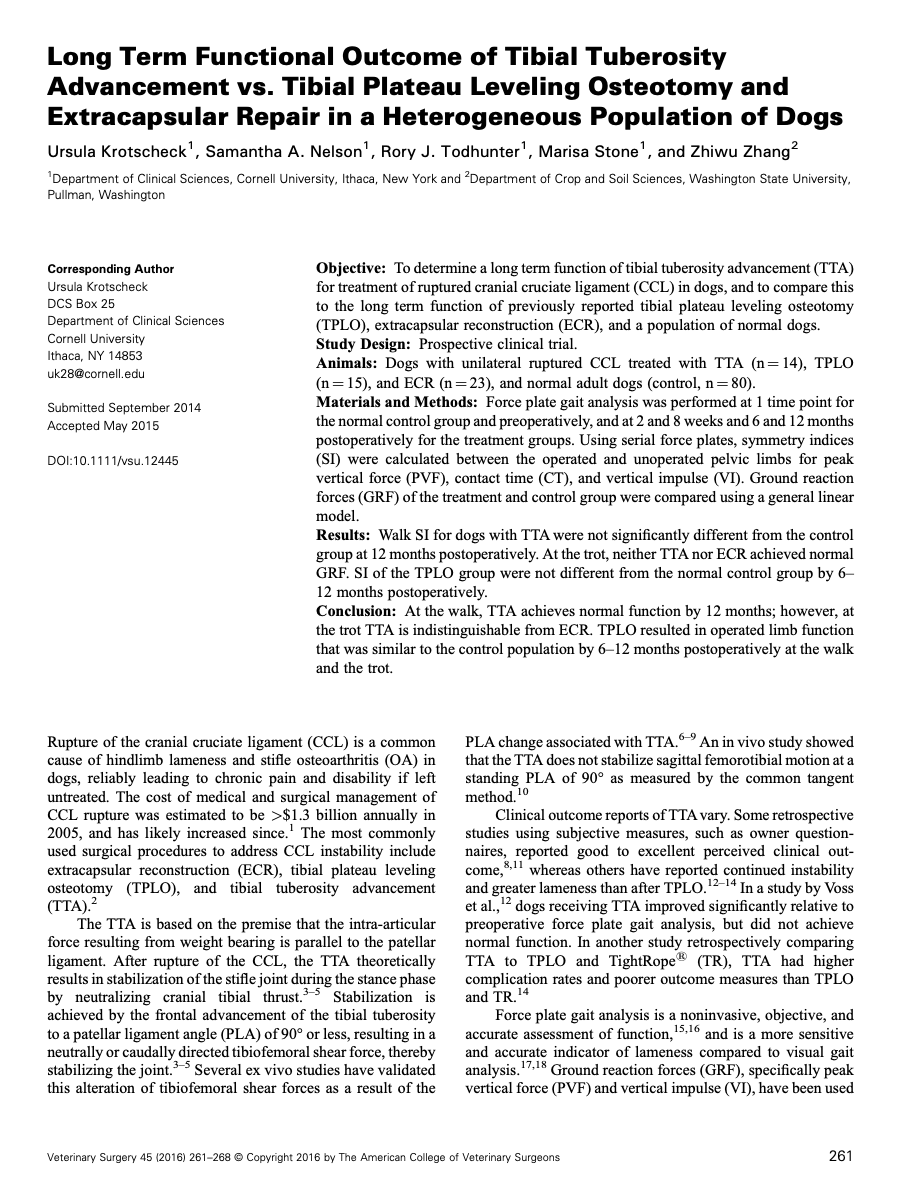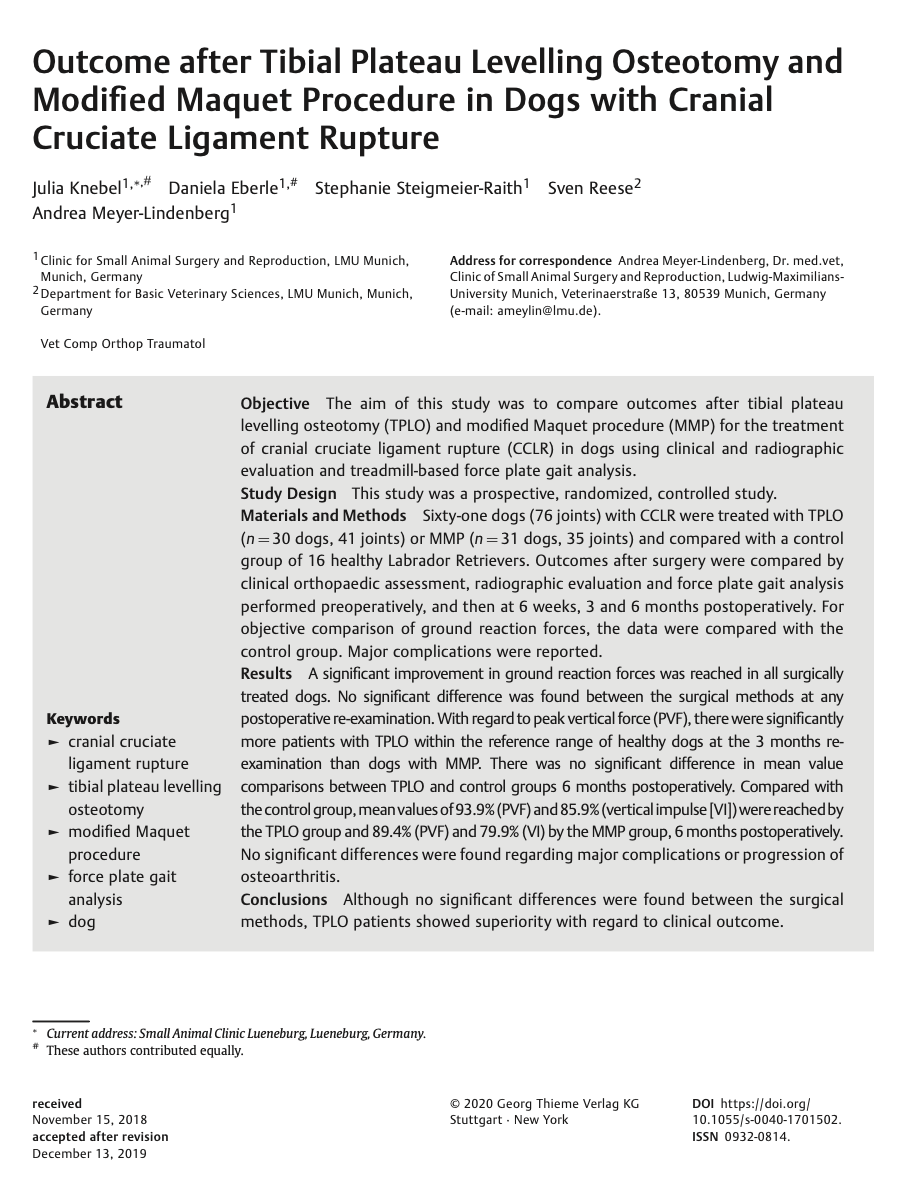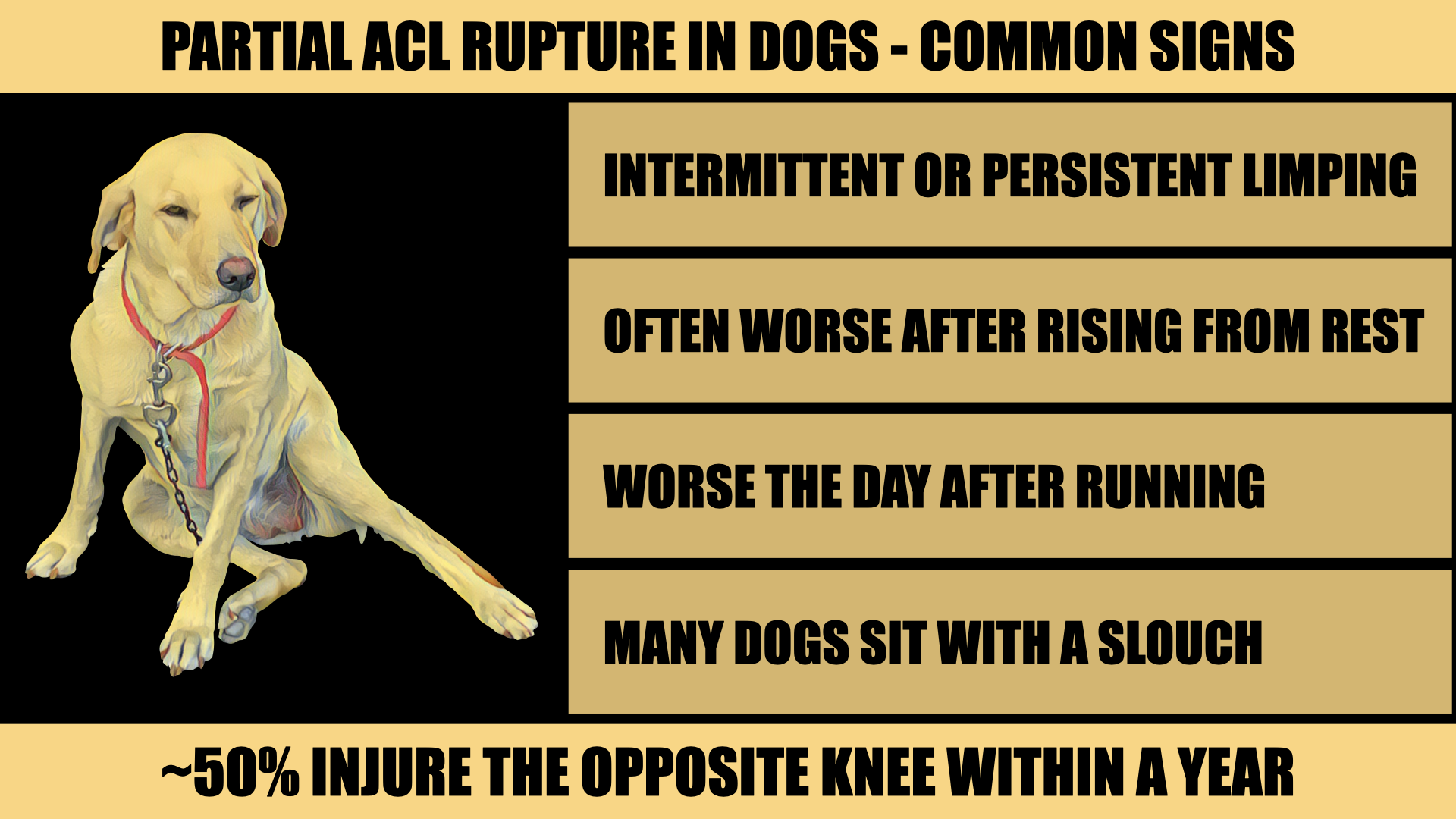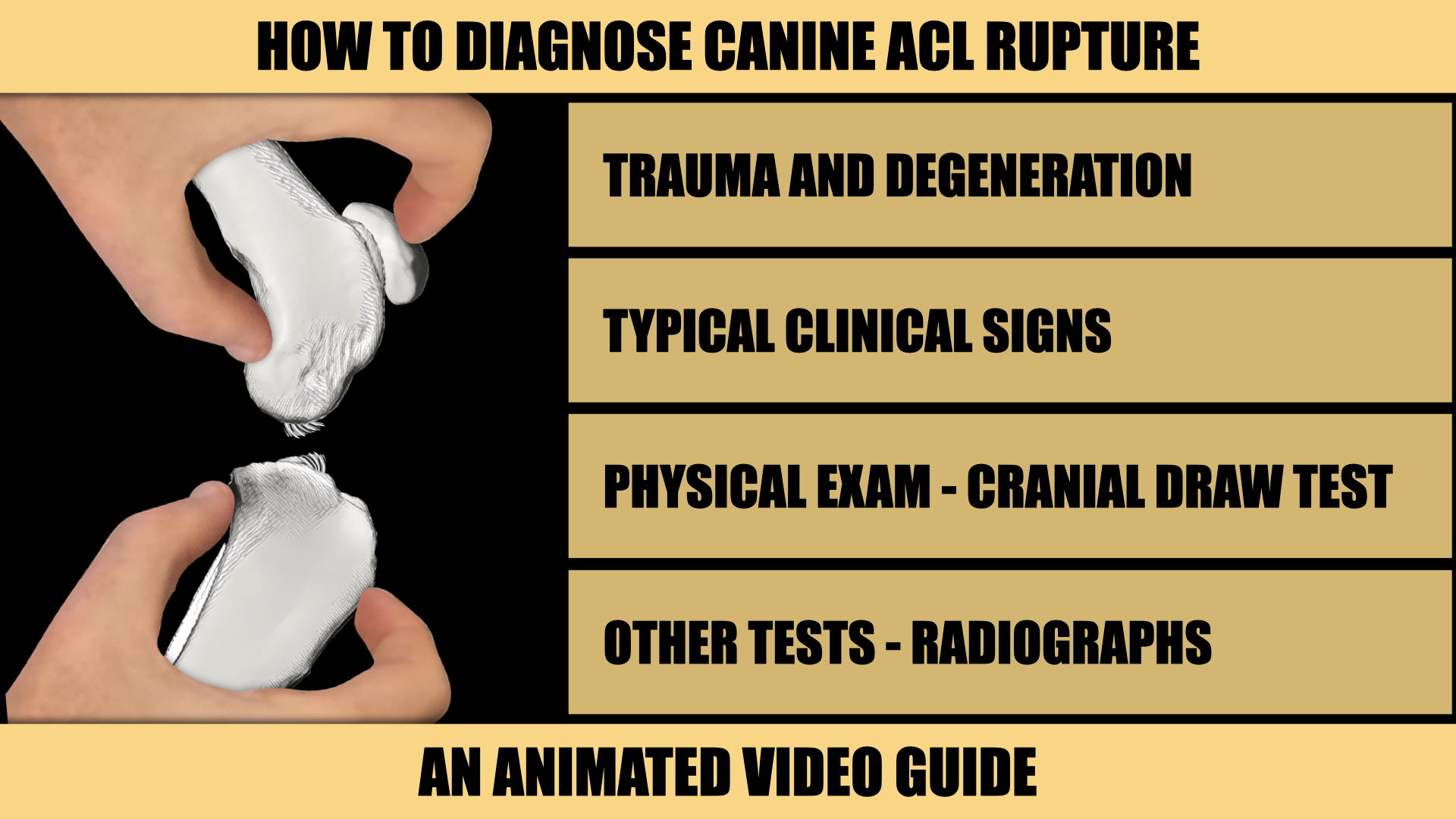WHAT’S AN ACL INJURY?
WATCH TIME: 3 MINUTES
IS SURGERY REQUIRED?
WATCH TIME: 5.5 MINUTES
SCIENTIFIC PUBLICATIONS
READING TIME: 1 HOUR
COMPLEXITY: HARD TO READ
PARTIAL TEARS
ACL injuries in dogs are more common after normal exercise than trauma. Periods of intermittent improvement are expected. Unfortunately, these respites don't imply a good chance of returning to normal. Two-thirds of injured dogs receive surgery and 50% injure the opposite knee within a year.
-
If TPLO is so good, why don’t they use it for human ACL rupture? This 2-minute video discusses the critical differences between human and canine ACL injuries.
-
You already know your best choice depends primarily on your surgeon. If they’re an expert at TPLO, this the your best choice. If they have no experience of TPLO, this would be a poor choice. I’m trained to perform TPLO, TTA, CBLO and lateral suture, so what’s my best option? If I selected an operation based on surgical ease, TPLO would be my last choice. I personally found TTA easier to learn and quicker to perform. TPLO is my first choice because it's supported by superior outcome data. Do I ever recommend TTA? I sometimes recommend it for dogs who suffered a TPLO complication on the opposite knee. On rare occasions, I select TTA for dogs who are too aggressive to stay in hospital overnight. For these dogs, the first 24-hours can be easier after TTA. Otherwise, I almost always recommend TPLO. This 8-minute video explains why.
-
The term ‘less invasive’ is often used to defend treatment options with poor outcome data. The best choice should prioritise comfort and safety, not ‘invasiveness’. This 5-minute video looks at ACL injury from a dog’s perspective.


